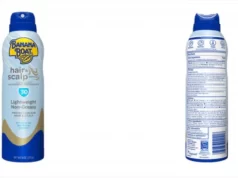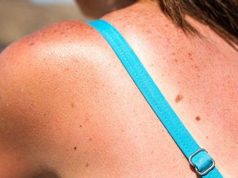Maximal use leads to plasma concentrations exceeding FDA threshold for waiving toxicology testing
MONDAY, May 6, 2019 (HealthDay News) — Application of commercially available sunscreens under maximum use conditions results in plasma concentrations that exceed the U.S. Food and Drug Administration threshold for potentially waiving nonclinical toxicology testing, according to a study published online May 6 in the Journal of the American Medical Association.
Murali K. Matta, Ph.D., from the U.S. Food and Drug Administration in Silver Spring, Maryland, and colleagues examined whether the active ingredients (avobenzone, oxybenzone, octocrylene, and ecamsule) of four commercially available sunscreens are absorbed into systemic circulation. Participants were randomly assigned to one of four sunscreens, with six participants each randomly assigned to spray 1, spray 2, a lotion, and a cream. Sunscreen was applied to 75 percent of body surface area four times daily for four days at 2 mg sunscreen per 1 cm².
Twenty-three of the 24 participants completed the trial. The researchers found that for all four products, after four applications on day 1, systemic concentrations >0.5 ng/mL were reached. Rash was the most common adverse event and affected one participant with each sunscreen.
These findings “will likely raise concerns in the medical community, as well as among sunscreen users,” write the authors of an accompanying editorial. “Until more information is available, it will be important to continue to reinforce clinical recommendations regarding the beneficial effects of photoprotection for skin cancer prevention that are rooted in strong biological rationale and modest clinical evidence.”
Copyright © 2019 HealthDay. All rights reserved.








